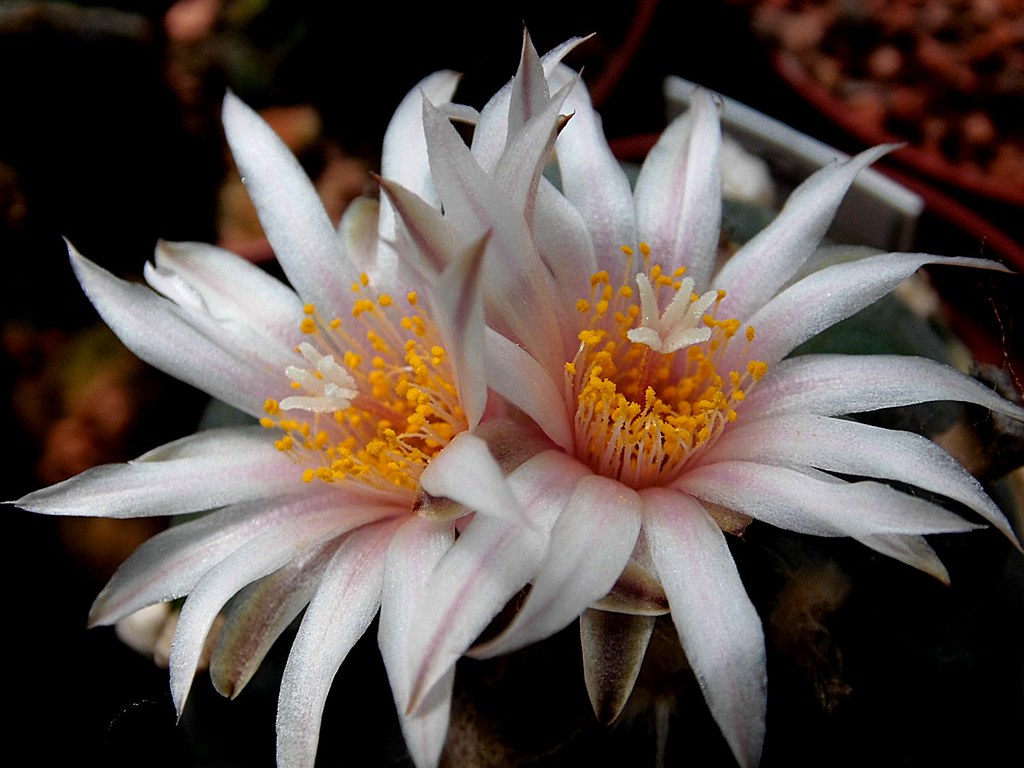Lophophora diffusa var. koehresii
Although proposed to be a separate species: Lophophora koehresii (Říha) Bohata, Myšák & Šnicer Kaktusy (Brno) special 2: 20. 2005; it is now considered to be a variety of Lophophora diffusa (Croizat) Bravo.
Other synonym is = Lophophora diffusa var. koehresii Říha
Kaktusy (Brno) 32(3): 70. 1996
Read more about this variety in the Sacred Cacti blog written by Keeper Trout.
Lophophora diffusa var. koehresii also know as false peyote, grows around the outskirts of Queretaro Mexico spanning quite a bit further than Lophophora diffusa, inhabiting a large flat basin (lagoon) between the Rio Verde in San Luis Potosi and Tula in Tamaulipas. L. koehresii‘s range overlaps L. williamsii range in part but it does not share the same habitat and instead prefers mud flats.
This species is mainly restricted to shallow lake beds in the soft alluvial sediments of the drainless basin and becomes totally covered by water for days if not weeks at a time during the rainy season. During the dry season, L. diffusa var. koehresii pull itself deep into the ground to a point of being completely buried until the rainy season appears. Like L. diffusa, it is also self-sterile and requires cross pollination to produce seed.
This species, despite its rough resemblance to Lophophora williamsii, is not hallucinogenic. L. williamsii has mescaline as its major alkaloid but var. koehresii contains only traces of mescaline and is therefore pharmacologically inactive.
Named for the German nurseryman and cacti enthusiast, Gerhard Koehres.
See the gallery below of koehresii spotted in habitat in Tamaulipas, Mexico.
Lophophora koehresii in habitat in San Luís Potosí. This appears to be the westernmost population of L. koehresii.
1

